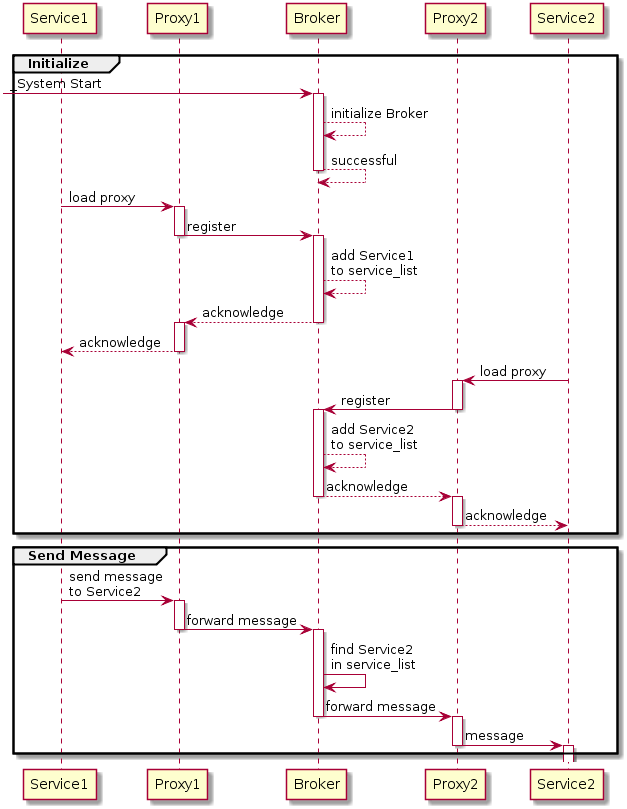|
Inbox And Outbox Pattern
{{Orphan, date=April 2023 The inbox pattern and outbox pattern are two related patterns used by applications to persist data (usually in a database) to be used for operations with guaranteed delivery. The inbox and outbox concepts are used in the ActivityPub protocol and in email. The inbox pattern The application receives data which it persists to an inbox table in a database. Once the data has been persisted another application, process or service can read from the inbox table and use the data to perform an operation which it can retry upon failure until completion, the operation may take a long time to complete. The inbox pattern ensures that a message was received (e.g. to a queue) successfully at least once. The outbox pattern The application persists data to an outbox table in a database. Once the data has been persisted another application or process can read from the outbox table and use that data to perform an operation which it can retry upon failure until comple ... [...More Info...] [...Related Items...] OR: [Wikipedia] [Google] [Baidu] |
ActivityPub
ActivityPub is a Communication protocol, protocol and open standard for Decentralised system, decentralized Social networking service, social networking. It provides a Client–server model, client-to-server (C2S) API for creating and modifying content, as well as a Federation (information technology), federated Inter-server, server-to-server (S2S) protocol for delivering notifications and content to other servers. ActivityPub has become the main standard used in the fediverse, a popular network used for social networking that consists of software such as Mastodon (social network), Mastodon, Pixelfed and PeerTube. ActivityPub is considered to be an update to the ActivityPump protocol used in pump.io, and the official W3C repository for ActivityPub is identified as a fork of ActivityPump. The creation of a new standard for Distributed social network, decentralized social networking was prompted by the complexity of OStatus, the most commonly used protocol at the time. OStatus was b ... [...More Info...] [...Related Items...] OR: [Wikipedia] [Google] [Baidu] |
Inbox Table
Electronic mail (usually shortened to email; alternatively hyphenated e-mail) is a method of transmitting and receiving digital messages using electronic devices over a computer network. It was conceived in the late–20th century as the digital version of, or counterpart to, mail (hence '' e- + mail''). Email is a ubiquitous and very widely used communication medium; in current use, an email address is often treated as a basic and necessary part of many processes in business, commerce, government, education, entertainment, and other spheres of daily life in most countries. Email operates across computer networks, primarily the Internet, and also local area networks. Today's email systems are based on a store-and-forward model. Email servers accept, forward, deliver, and store messages. Neither the users nor their computers are required to be online simultaneously; they need to connect, typically to a mail server or a webmail interface to send or receive messages or do ... [...More Info...] [...Related Items...] OR: [Wikipedia] [Google] [Baidu] |
Outbox Table
Electronic mail (usually shortened to email; alternatively hyphenated e-mail) is a method of transmitting and receiving digital messages using electronic devices over a computer network. It was conceived in the late–20th century as the digital version of, or counterpart to, mail (hence '' e- + mail''). Email is a ubiquitous and very widely used communication medium; in current use, an email address is often treated as a basic and necessary part of many processes in business, commerce, government, education, entertainment, and other spheres of daily life in most countries. Email operates across computer networks, primarily the Internet, and also local area networks. Today's email systems are based on a store-and-forward model. Email servers accept, forward, deliver, and store messages. Neither the users nor their computers are required to be online simultaneously; they need to connect, typically to a mail server or a webmail interface to send or receive messages or do ... [...More Info...] [...Related Items...] OR: [Wikipedia] [Google] [Baidu] |
Enterprise Service Bus
An enterprise service bus (ESB) implements a communication system between mutually interacting software applications in a service-oriented architecture (SOA). It represents a software architecture for distributed computing, and is a special variant of the more general client-server model, wherein any application may behave as server or client. ESB promotes agility and flexibility with regard to high-level protocol communication between applications. Its primary use is in enterprise application integration (EAI) of heterogeneous and complex service landscapes. Architecture The concept of the enterprise service bus is analogous to the Bus (computing), bus concept found in Computer architecture, computer hardware architecture combined with the modular and concurrent design of high-performance computer operating systems. The motivation for the development of the architecture was to find a standard, structured, and general purpose concept for describing implementation of Loose couplin ... [...More Info...] [...Related Items...] OR: [Wikipedia] [Google] [Baidu] |
Message Broker
A message broker (also known as an integration broker or interface engine) is an intermediary computer program module that translates a message from the formal messaging protocol of the sender to the formal messaging protocol of the receiver. Message brokers are elements in telecommunication or computer networks where software applications communicate by exchanging formally-defined messages. Message brokers are a building block of message-oriented middleware (MOM) but are typically not a replacement for traditional middleware like MOM and remote procedure call (RPC). Overview A message broker is an architectural pattern for message validation, transformation, and routing. It mediates communication among applications, minimizing the mutual awareness that applications should have of each other in order to be able to exchange messages, effectively implementing decoupling. Purpose The primary purpose of a broker is to take incoming messages from applications and perform some acti ... [...More Info...] [...Related Items...] OR: [Wikipedia] [Google] [Baidu] |
